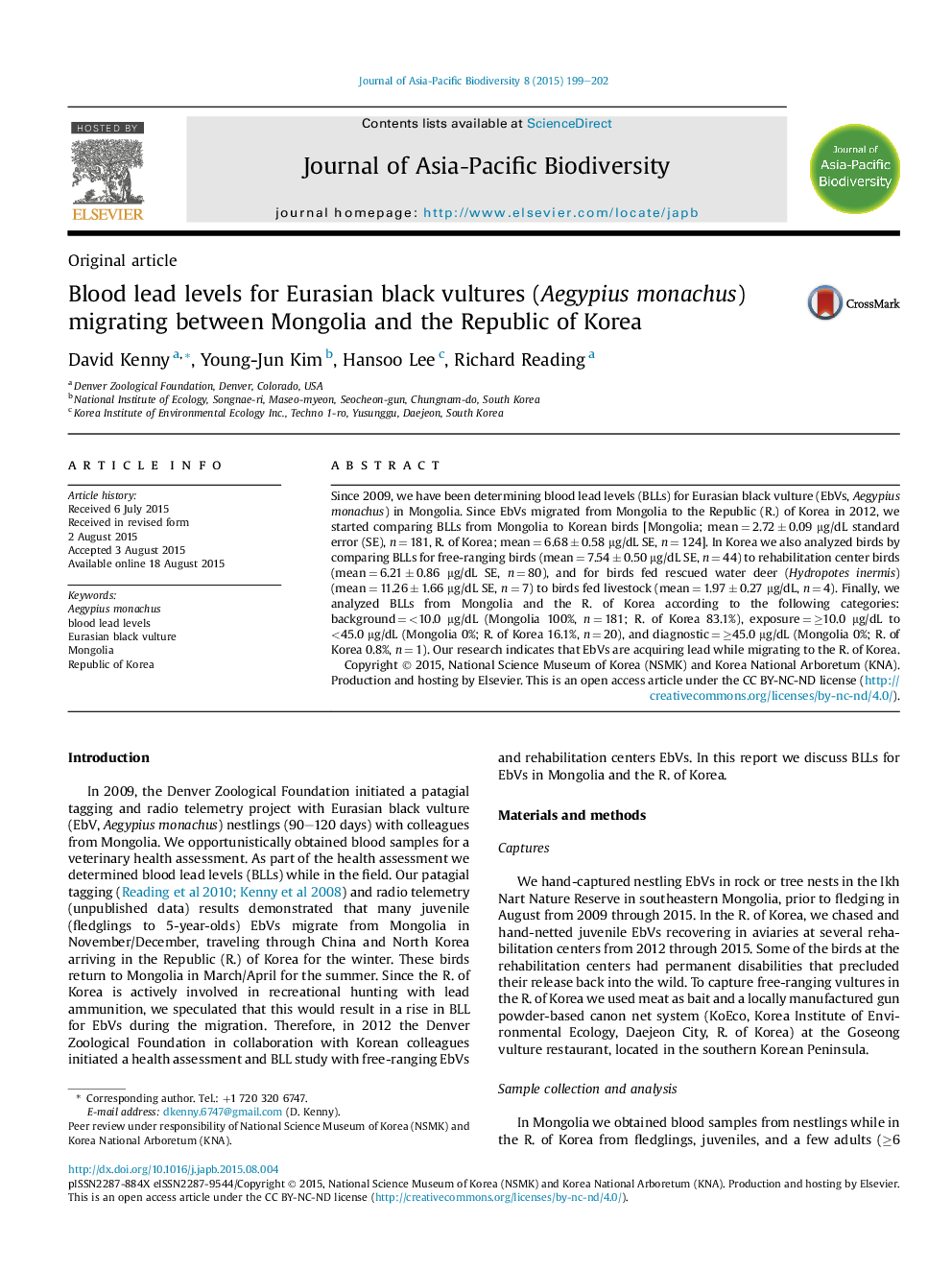| Article ID | Journal | Published Year | Pages | File Type |
|---|---|---|---|---|
| 4395049 | Journal of Asia-Pacific Biodiversity | 2015 | 4 Pages |
Since 2009, we have been determining blood lead levels (BLLs) for Eurasian black vulture (EbVs, Aegypius monachus) in Mongolia. Since EbVs migrated from Mongolia to the Republic (R.) of Korea in 2012, we started comparing BLLs from Mongolia to Korean birds [Mongolia; mean = 2.72 ± 0.09 μg/dL standard error (SE), n = 181, R. of Korea; mean = 6.68 ± 0.58 μg/dL SE, n = 124]. In Korea we also analyzed birds by comparing BLLs for free-ranging birds (mean = 7.54 ± 0.50 μg/dL SE, n = 44) to rehabilitation center birds (mean = 6.21 ± 0.86 μg/dL SE, n = 80), and for birds fed rescued water deer (Hydropotes inermis) (mean = 11.26 ± 1.66 μg/dL SE, n = 7) to birds fed livestock (mean = 1.97 ± 0.27 μg/dL, n = 4). Finally, we analyzed BLLs from Mongolia and the R. of Korea according to the following categories: background = <10.0 μg/dL (Mongolia 100%, n = 181; R. of Korea 83.1%), exposure = ≥10.0 μg/dL to <45.0 μg/dL (Mongolia 0%; R. of Korea 16.1%, n = 20), and diagnostic = ≥45.0 μg/dL (Mongolia 0%; R. of Korea 0.8%, n = 1). Our research indicates that EbVs are acquiring lead while migrating to the R. of Korea.
